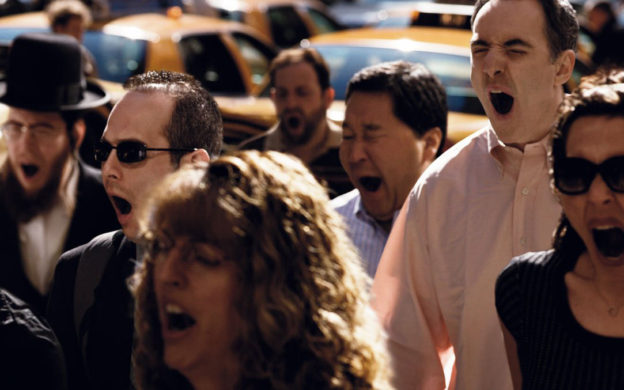I meet Danish photographer Peter Funch at Vinyl bar in the old funky district of Vesterbro in Copenhagen. With some nice tunes in the background, we talk about his photography. Peter likes using the words “poetic” and “romantic” when describing events. He talks about his photoshoots like narrative stories, without weaving in too much technical jargon. “Formulated” is another word he likes to use when explaining his methodology; it’s true his images are well thought-out, achieved with lots of patience, and based on research.
But lest we forget, Peter is also a photographer who took images of the same people on the same street for nine years! “42nd and Vanderbilt” is Peter’s most celebrated project. It shows the everyday life of New Yorkers, the city where the photographer spent many years of his life, capturing commuters rushing to work, performing morning rituals, preparing for a long day ahead and then there is Peter standing in the corner with his 35mm digital camera, trying to find the sequence in chaos.
Repetition, rituals, habits, the idea of how we all behave collectively; it’s all there, passing through the photographer’s lens. The inspiration for a series can range from a movie to a story about the mystic disappearance of a female pilot, to the state of nature, to the exploration of the transitional moments. Peter’s photography is multilayered, open-ended, and experimental.
It’s hard to frame Peter’s approach in a single genre. It’s not just street photography, or documentary, or landscape, or conceptual: it can be many things depending on how you interpret it. Often, his works comments on something bigger than the scale of the images themselves.
We spoke to photographer Peter Funch about his work, equipment, and inspiration:
How did you get into photography and how have you developed your technique?
I started studying photojournalism in 1999. I think the school was maybe the best tool for learning how to do narrative photography, documentary photography, and also a way to look at the idea of making documents. From the perspective of a young photographer, journalism maybe was not the direction I wanted to take; I wanted to be more artistic. But having worked in journalism gave me a lot.
Journalism has changed so much over the last twenty years! There are so many forms of media, not to mention the financial aspect of it all. There are so many magazines, but there’s also an interesting new way of working with storytelling, journalism, and photojournalism.

I have worked with magazines occasionally, which is interesting as it’s such a creative platform, but it’s also such a niche, miniature landscape in the media. I still enjoy doing journalism, photojournalism, and documentary. In a way it’s still what I do, I just have much more freedom in terms of making my projects conceptual.
Your two most well-known series, “Babel Tales” and “42nd and Vanderbilt” deal with rituals and collective behavior. What do these projects have in common and how do they differ?
I always used the film “Smoke” as an example. That’s where I got the idea. It’s a Wayne Wang’s film based on Paul Auster’s story about a tobacconist in Brooklyn where a guy is taking pictures every day at the same time. He then makes this big catalog of images taken over the years. There’s something about the ritual, the repetition, the pace of making images that becomes a study.
My method of working has that romantic aspect of going back to the same place and looking for the people who are there again and again. By combining those rituals with the curiosity about society and social structures, one could say that all the aspects of society are based on the algorithm or on the structure of how the traffic works and how people live.
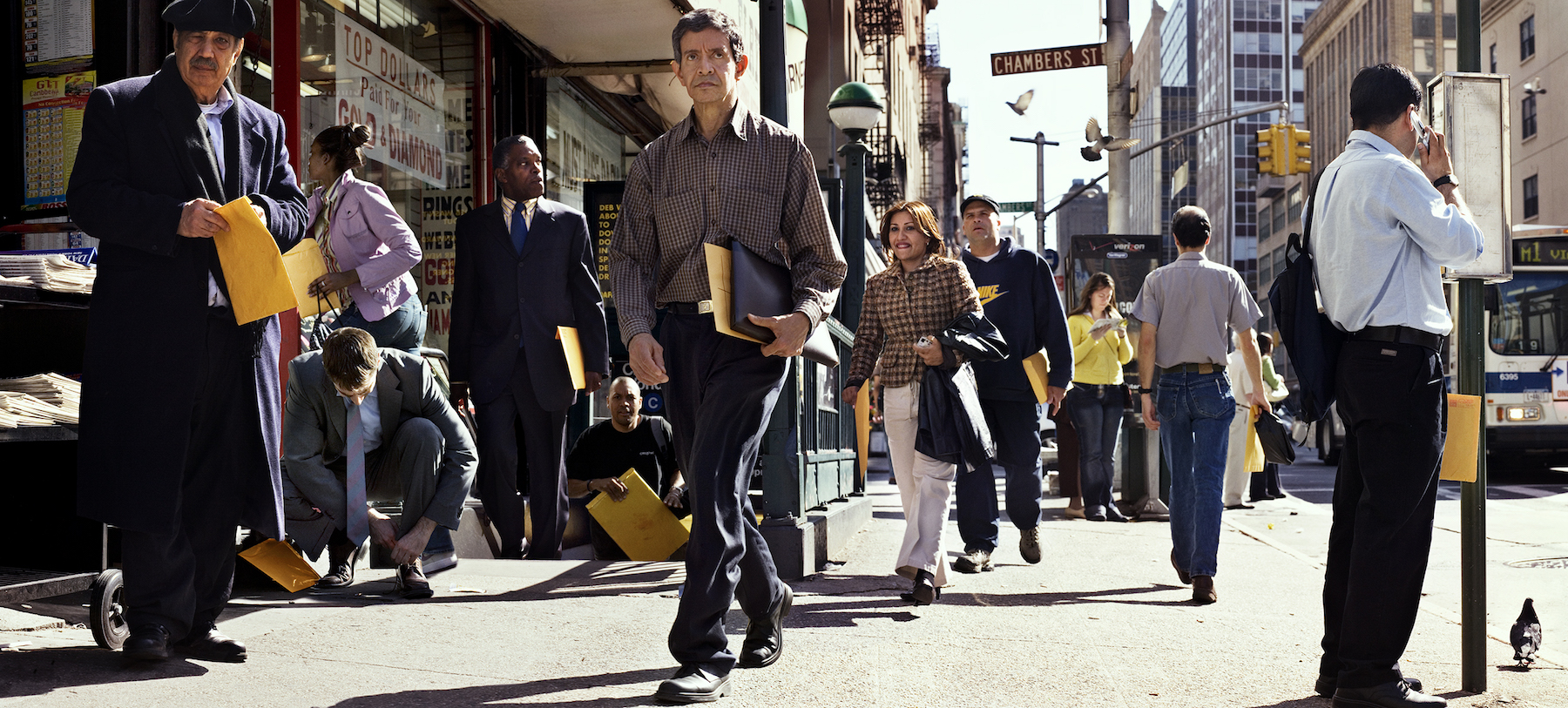 |
|
 |
From Peter Funch’s Babel series
These two projects are based on the same way of working but it illustrates two aspects of society or two sides of it, Babel Tales is very much about the collective moment and also works with the aspect of time, the shared moment while the other is about the individual ritual, privacy in the public space.

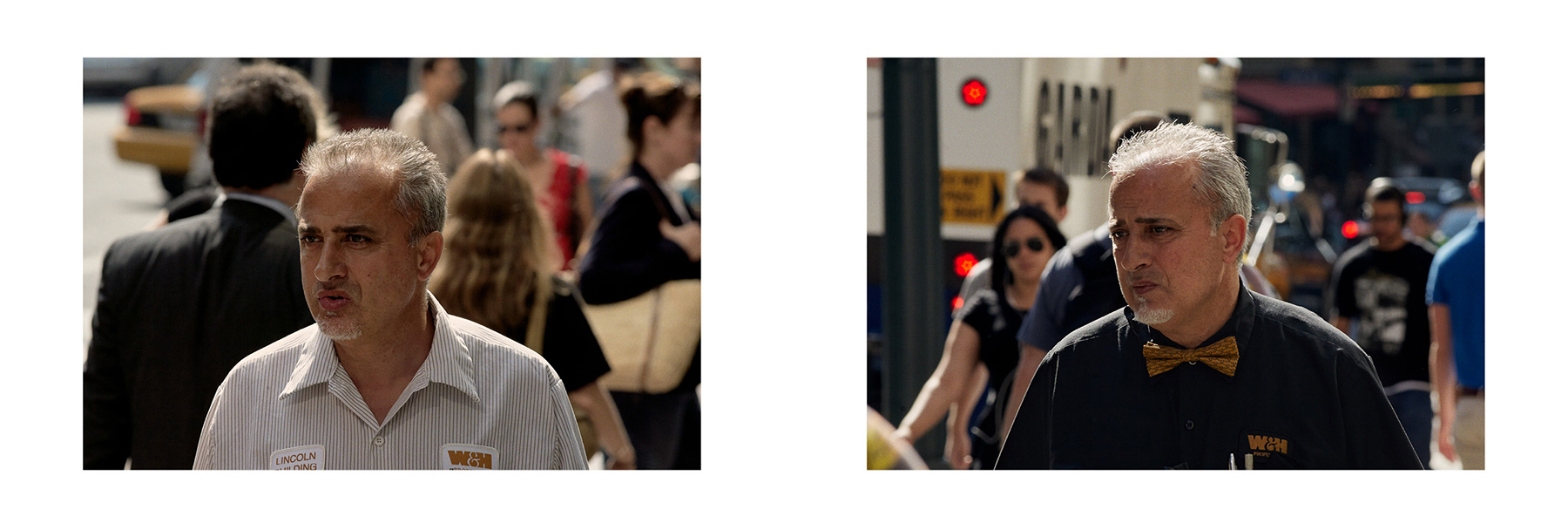
From Peter Funch’s 42nd and Vanderbilt series
Can you talk a bit about the equipment you use and the differences between photographing in the cities in terms of light, space, and techniques?
“Danish Dairies” was made specifically for Expo 2010. It was a commissioned and formulated project where I had to make stories about Danish society for the Chinese people. It was kind of a fairytale – not completely objective or truthful – more like what does the Danish society look like? How do we live in communities?
Of course, it looks different from when you shoot in NYC with aesthetic aspects. Light-wise, we are just in another place and we don’t have air-conditioned air in the street. The light is just different. The equipment I use is super simple: 35mm digital camera as well as a 85mm. When the shots stitch together, it has this kind of large-format feel. “42nd and Vanderbilt” has nothing done to it, it’s just data from the camera.
Can you talk about the transitional moments you’ve captured in the “Last Flight” series, their meaning, and the mystic disappearance of the pilot Amelia Earhart
It’s funny, I am still so fascinated with this project and the story of Amelia Earhart trying to fly over the Pacific Ocean when her plane disappeared on the last trip. The investigations about what really happened to her continue, so we’re still reading about it in the news. It’s beautiful that this hero, at that time a celebrity, became a myth. Even when you prove something through your research it might not solve the whole question; the story just has to live on.

I think her transition from a celebrity into a myth is quite a beautiful and poetic transition itself, as well as the bridge becoming a ruin [Editor’s note: Peter is referring to the images of “Last Flight” that capture the destruction of the Amelia Earhart Bridge in Atchison, Kansas]. This project was like a parallel to what’s happening to American society. This is also a form of transition that became a multilayered story of a town.
That’s why I photograph those transitional elements like fish out of the water, house under renovation, and so on. It’s a way of showing that things are changing or are not in the place they’re “meant” to be. This project is about five years old but I’m kind of still working on it. All this new evidence keeps coming out and it becomes even more fascinating to see what happened to Amelia or what’s been proven about her death.

Demolition of the old Amelia Earhart bridge
Do you think that given the world’s climate crisis, landscape photography can just serve the purpose of beauty or is it inherently political?
It’s a little naive to just make beautiful landscape photography. In my case, with “The Imperfect Atlas” using RGB tricolor separation was maybe the most drastic conceptual approach to the project.
RGB separation is the technique used in the beginning of color photography. It came about when the industrial revolution began, so it has this link to when we started polluting and changing the way we interact with nature. I used the combination of red, green and blue on the pieces of landscape and that combination gives you a color photograph.
So it’s like three photos put together, creating a narrative with the things moving in the picture; things that don’t necessarily fit. You get a mismatch in colors, whether it’s humans walking or clouds moving. It goes almost from being 70’s sci-fi to something that looks like a chemical mistake. It tells the story of the beauty of nature but at the same time the destruction of it.
I worked with on a project with an NGO that documented the glaciers. My approach was to find vintage postcards and redo the photos of that time. Those postcards have been used by people to tell stories but ended up being pieces that illustrate the way nature changed. Climate change has been going on for a long time, but the coverage of it has gained momentum over the last two years; suddenly this project I did is now traveling around the world to spread a specific message.
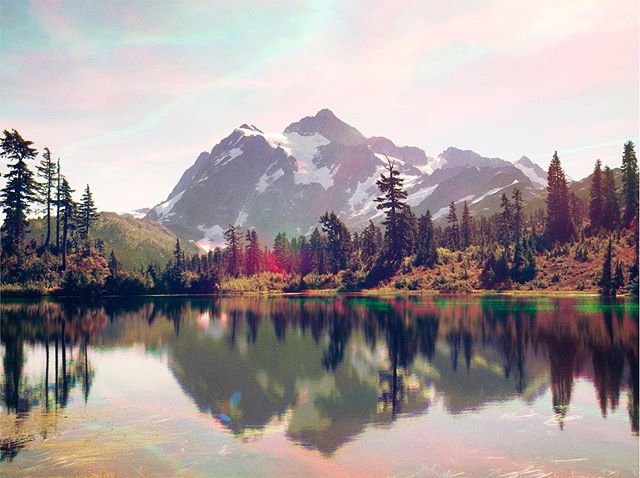 |
|
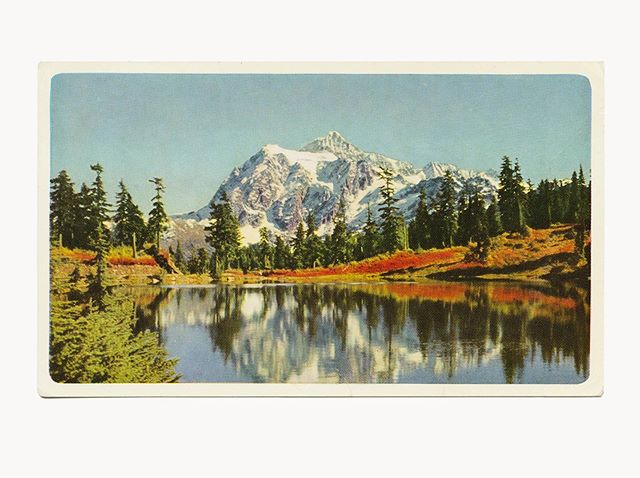 |
You know, there’s so much scientific research proving how we are tearing nature apart, but I don’t think as an artist it’s my job to document it scientifically. I’m just a storyteller. I did this project to illustrate what we are doing and “The Imperfect Atlas” has multiple interpretations. It’s much more open-ended than any of my other projects.
Photographers like Robert Frank and Jacob Holdt have photographed how people live in America in a very specific way. What was your approach like?
These legendary photographers are much more open to photographing as they go. I think my work is more conceptual and planned, it’s more based around ritual. Even though it has the look of documentary photography, I feel I am so far away from it. I don’t always carry a camera with me, although I try to sometimes. I have a hard time being a loose photographer. Those who work more spontaneously with photography are much more loose in their way of shooting. I think I had it at one time, but have definitely lost it by trying to conceptualize projects in such a tight way.
Going through your photographs, I get a feeling that you are always trying to escape boredom. What stimulates you?
Coming from the journalism, you have to work within the terms of being truthful and objective, but what does it mean to be truthful? What does it mean to be objective? It’s like being between two chairs, constantly questioning this or that.
I’ve always struggled with one-dimensional photos, I am more fascinated by making a photo, project, or collection of images that can be seen in many ways. It becomes an open document and to me, it’s fascinating that you are not the dictator of a story, you are not standing with a megaphone announcing “this is the way I look at things!” I guess that explains why I’m stimulated by things that are multilayered or open-ended.

What do you think is the future of photography?
Twenty or thirty years ago we had a narrator, one person telling a story, but now there are so many narrators. That’s what I was trying to illustrate in the “Last Flight” by having multiple cameras at the same event. It was about the idea of having several people with cameras who, when you look at the combined images, give the sense of an event. I think that’s the major change we’ve been through over the last 30 years and it’s going to evolve even further.
Photography is probably going to be even more devalued in some ways yet more valued in others. It will be used more conceptually and maybe with less of an idea of “a photograph.” I guess it might become a document or proof of how surveillance, AI, and facial recognition work.
The frame of photography, in the artistic sense, is important. I’m sure it’s going to progress and continue to be important. It’s interesting how the media keeps developing not only how we view photography but also the technical side of it. The New York Times is the perfect example: they are using these 360° cameras and are always trying new ways of illustrating their stories. To me, that’s fascinating.
You are now based in Berlin. How is it different from living in New York?
My family and I came back to Europe because we had lived in New York for many years and we were done with it. We needed something else and decided to move to Berlin. Berlin appeared to be a quiet place where you have time and the mindset of really researching, reading, listening to more podcasts, and not having to work all the time to make things possible financially – a big contrast to America.
Coming back to Europe felt like regaining my mental freedom. I started research on a new project but have not really found the path with it yet. I haven’t photographed anything in Germany; maybe it’s the way things look or the way people are. In New York people are just asking to be photographed.
What’s next for you?
I am finishing the book, The Imperfect Atlas. It’s going to be out quite soon and the exhibition is traveling around. It has been shown at the Vienna Natural History Museum and I’ll have a presentation at Paris Photo. It’s also going to London and then to Mexico. “Babel Tales” will also be going to Vienna and Switzerland as a part of a group exhibition about street photography, hanging next to Diane Arbus and some really classic masterpieces of photography as this new conceptual approach to street photography. I’m slowly starting to work on a new project and it will probably take a while.
See more of Peter Funch’s work.

